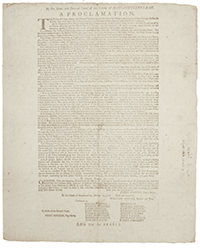Clarence Wolf of MacManus Rare Books has been writing some very interesting perspectives on events and people he has encountered over his career in the rare book world. He has a keen eye and a gift with language.
Among the more frequently asked questions by visitors unacquainted with my shop are: Is this a library? Have you read all these books, and of course, my favorite, May I use your bathroom. Other popular ones are; What’s the most expensive, or the rarest book that you’ve ever sold. The question that I ask myself is, who, of all the interesting people I’ve dealt with, stands out above all the others as being the most memorable. The answer: the legendary book collector Frank T. Siebert.
Frank Siebert started collecting books in his youth. He later became a pathologist, who, after an acrimonious divorce, left Pennsylvania, stopped practicing medicine, and moved to Old Town Maine. His collection of Americana was one of the best ever assembled. It was sold in two parts at Sotheby’s in May and October 1999. Numbering some fifteen hundred books, broadsides, maps, and autographs, it was arguably second only to the Streeter sale in scope and importance. The central theme of the collection was books about Native Americans, with a focus on linguistics. Dr. Siebert was fascinated with Indian languages, and although he had no formal training, he was highly respected by people in the field. Not only did he own the 1663 edition of the Eliot Indian Bible, which is printed in Algonquin, he could read it as well. He wrote a number of papers concerning Indian linguistics, and spent some forty years compiling a Penobscot-English dictionary. Today, the American Philosophical Society has all of his papers. What differentiates the Siebert collection from many of the other significant libraries sold during the late 19th or 20th centuries is the remarkable condition of the books, and the number of genuine rarities; that is books seen only once in a generation or two. The sale brought over $12,000,000, nearly twice the high estimates in the Sotheby’s catalogue.
Frank Siebert was born in Kentucky in 1912, and later moved with his parents to Pennsylvania, where he was educated at The Episcopal Academy, and later Haverford College and University of Pennsylvania Medical School. His first book purchases were made in the late 1920s when he was still in high school. These were modest purchases, usually $10 or $15, which for the most part were bought from Goodspeed’s of Boston, Leary’s and Campbell’s of Philadelphia, and Lowdermilk’s of Washington. The bulk of his purchases were made during the 1940s and 1950s, when books were more plentiful and prices were low. This surfeit of materials was the result of the Depression and World War II, when money was scarce, and institutional participation was modest. The effect of his divorce and the discontinuance of practicing medicine resulted in periods of less vigorous acquisitions. But although he might have slowed down, he never stopped. It seems that whatever funds he had went towards his collection. When he was in medical school he sold his blood in order to buy books. A recurrent theme in his correspondence was his disgust with the number of institutions that were entering the market, causing prices to escalate. He also vented about a number of dealers, their high prices, plus there were long screeds about banks and Wall Street.
Once Frank Siebert began to collect in earnest, the dealers he bought the most from now included Henry Stevens, Earnest Wessen, Lathrop Harper, Wright Howes, Charles Heartman, Peter Decker, George MacManus, and Dr. Rosenbach. Goodspeed’s however remained his number one bookseller. There were others, but these were his primary sources.
When dealing with Dr. A.S.W. Rosenbach, he met his cataloger, Edwin Wolf II, whom he greatly admired and respected. It was through Edwin that I first learned about Dr. Siebert. He was described as being brilliant, irascible, and as politically incorrect as could be imagined. In addition, he was an Olympian collector, possessed of a pachydermatic memory, and possibly crazy. I filed this information away and pretty much forgot about it until one late afternoon, when Dr. Siebert appeared.
Frank Siebert’s first visit took place sometime in the late 1970s. He had come from visiting my cousin Edwin, then librarian of the Library Company of Philadelphia, which was just around the corner from my old shop. At first I thought he was a homeless person looking for a handout, but quickly realized who he was. Even though Edwin had described him to me, I was really taken aback by his physical appearance. His clothes were threadbare, and his necktie was covered with stains. He was tall, had a large head, somewhat of a paunch, and a deep, booming voice. When he began to discourse about books his eyes would roll back in his head, and he would proceed to recite the most detailed (sometimes painfully so) minutia and obscure points about books. His knowledge extended well beyond knowing books as physical objects. He knew their contents, and was familiar with the history and provenance of many individual copies of Americana rarities. Once he became ensconced, he began asking me questions, and talking about books. I quickly discovered that for him, time, and or timetables were irrelevant. Since his visits to my shop usually occurred after seeing my cousin Edwin, it meant that he arrived late in the day. My staff would leave and I would end up staying an hour or so after our normal hours. As often as not I would get a call from my wife asking where I was, and why I was still at work. I would then have to fabricate an excuse that would satisfy the Doctor. Merely saying I was late for supper wouldn’t have been sufficient reason not to continue talking about books. His visits continued for another 12 or 15 years, and we had a regular correspondence that continued to within a year of his death.
Despite all of his prejudices, and his stand-alone oddness, I liked him. What I find somewhat remarkable, is that he liked me. I know that he really admired Edwin Wolf, and I know that he liked George MacManus, but as his letters clearly demonstrate, he had little or no time for the present crop of dealers. In one of his letters to me he said, “You are energetic in pursuing rare Americana. The Rendels, Araders, Jenkinses, & to some extent Nebenzahl—and other sons of millionaires seem to be ruining the Americana game with their excesses...(they) don’t know a damn thing about books---imperfect copies, and lousy condition...”.Writing to Bill Reese he said “I met Jenkins once in Clarence’s shop, and he gave me short shrift. I concluded he was a fellow on the fast track, and not to be trusted. Librarians showed me some of his catalogues—no collations or condition—and mostly imperfects priced higher than perfect copies. And he was president of the ABAA for a time. What a disgrace! Whether you liked him or not, I think there is little doubt Johny (sic) Jenkins was a crook, and a shabby character, unfit for honest business.” In one of his letters he started by complimenting me: “Just got your cat. 326—you do a fine and careful job of cataloging, I must say, and also try to locate good items” But then he goes on to say “All I can say is –it looks like you are really pushing prices upward...”
As a result of divorce and his decision to stop practicing medicine his available funds were greatly diminished. This caused him to become increasingly embittered towards the medical profession, financial institutions, the government, and all the people involved with those organizations. In a letter to Michael Zinman apropos of the medical profession he wrote: “I’m not practicing my medicine (pathology) for many years---if I had continued I would be dead from stress and irritation, overwork, and underpaid. Things have changed since then---now they work banker’s hours and charge the public, insurance companies, and (the) government fees that would formerly have made me blush with shame. Don’t take home calls no night calls, no evening hours, no work on Saturday or Sunday, etc. And the lies they have told!! And the trails of tombstones they have left behind as monuments to their ineptitude and avarice...”
In his screeds about the financial industry he usually begins by blaming FDR, who is always referred to as “Old Jelly Legs”, and continues by berating Charles Keating, Ivan Boesky, Michael Milken, Neil Bush, and “hundreds of others in junk bonds and bank swindles”. “It is 1929 all over again—banks are over-extended and failing...” Interspersed between book requests, and or bibliographical discussion, these rants were part of every missive.
As time passed our dealings, whether over the phone or through our written correspondence became increasingly familiar. His purchases however began to decline in inverse proportion. Money and health concerns were the biggest factors. Sometime in 1996 Frank Siebert was diagnosed with prostate cancer. He stoically announced to Bill Reese that he gave himself eighteen months. His estimate turned out to be quite prescient. He died in January 1998.
Bailey Bishop ran the Americana department at Goodspeed’s. After they closed their doors, he continued as an independent bookseller. Of all of us, Bailey had the closest relationship with Frank Siebert. Since the Doctor knew he was dying, he asked Bailey to come to Maine and help him put his books and affairs in order. He also reconciled with his two daughters from whom he had been estranged for most of their lives. It was decided that the collection would be sold at auction. Bailey catalogued the books and they went to Sotheby’s.
Before we talk about the auction and the events leading up to it, I need to tell the story of Frank Siebert’s funeral.
Frank Siebert wanted to be buried with his parents in West Laurel Hill Cemetery. The cemetery is located in Bala Cynwyd, a suburb of Philadelphia, only a few miles from where I was living at the time. Bailey Bishop called me and told me that the Doctor had died, and asked if I was planning on attending his funeral, which was to take place the following Monday. He then asked if I could pick him up so we could go to the funeral together. The service was scheduled for 11:00, and was held in a small chapel at West Laurel Hill. I arranged to pick Bailey up around 10:00 so that we could pay our respects, and not be late.
The day before the funeral I had made arrangements to look at a collection of books that had belonged to the father of an old friend of mine who had died recently. My friend’s parents were divorced, so the estate was being handled by my friend’s half-brother who was a number of years her junior. When I arrived I was greeted by my friend’s brother, and Jack Freas, my friend and colleague. Jack had been a friend of the deceased, and was also looking at books. I was escorted to the second floor, where the library was housed, and was shown which books were available.
Jack left, and I began looking at books with my usual focus, paying little attention to my surroundings. I suddenly became aware of the presence of another being. There, across the hall was (we’ll call her) Mrs. Farnsworth, my friend’s step mother. She was in a hospital bed, terminally ill, but fortunately, for the moment, was quiet. The only distraction was a very unpleasant odor that permeated the entire second floor.
After a short time Mrs. Farnsworth’s son appeared and asked me if I would mind if he left me there for a few minutes so that he could pick up his mother’s prescriptions. He assured me that his mother would be no problem, and that he’d be back in a jiffy. I said it wasn’t a problem. After all, the woman was practically comatose, and barely alive.
I returned to the pleasant task of looking at books, and was so absorbed that I was unaware of what was happening across the hall. Suddenly I heard a faint voice calling for help. I looked up, and there, to my horror was Mrs. Farnsworth. Somehow she had managed to get out of her bed, and was now standing very close to the stairwell that separated the two rooms. She had what appeared to be a myriad of tubes and wires that had become wrapped around her, and was swaying back and forth over the railing. In addition, she was wearing the most diaphanous night gown imaginable. I was now faced with the unenviable task of reinstalling Mrs. Farnsworth in her hospital bed without the two of us falling down the stairs. I held my breath, tried as best I could not to look at what her gown failed to conceal, and started walking her back to her bedroom. Since she was asleep when I got there, and we had not been introduced, she was unaware of my existence. She now panicked because her son wasn’t there and I was a stranger. She was so medicated that my efforts to assure her that I wasn’t intending her any harm were fruitless. After what seemed like an eternity her son arrived and calmed the waters. We managed to get her back into bed, I forgot about the books, and left.
It was a cold, crisp January afternoon. I remember leaning up against my car, taking deep breaths, and trying to purge the image of Mrs. Farnsworth—au naturale. Although I was somewhat shaken by the day’s events, I was looking forward to seeing Bailey the next day.
I picked Bailey up at his parents place and we drove to West Laurel Hill. When we arrived at the chapel no one was there. We were greeted only by the Doctor, as he lay in an open casket. He was wearing a suit, and his glasses were askew. It was a sad sight. After a while his two daughters, their husbands, and three or four small children arrived. Not long after that a middle-aged woman, a cousin I believe, and a very elderly gentleman who had been in the Boy Scouts with Frank Siebert came in. With the exception of the cleric, Bailey and I were the only other people there. The service, such as it was, could at best be called antiseptic.
In advance of the funeral we had paid our respects to the family, and had assumed that at its conclusion we would go home. There was, however, a problem. Since there were only the two of us, his two sons-in-law, and the minister, our services were required as pall bearers. We actually had to carry the casket out of the chapel, and then again to the grave. We then, at the insistence of the family, were included in a luncheon. The word surreal falls short of describing the day’s events.
Between Frank Siebert’s death in January 1998 and the first of the two sales the following year a lot happened. We, along with several others were sent advance proofs of the catalogue by Sotheby’s. I worked very closely with Bill Reese and tried to formulate bids for books that we would buy and own together. As time went on, more and more individuals and institutions gave us bids, meaning that there were fewer lots we were able to buy together for stock. I decided to bid through Bill because Sotheby’s had offered a deferred payment plan if you spent over $1,000,000.This made sense since Bill was, by far the biggest buyer of the sale. His purchases accounted for half the dollar amount spent, and about half the number of lots.
The first of the two Siebert sales took place on May 21, 1999, almost exactly a year and five months after Frank Siebert’s death. Bailey Bishop did the cataloging, and wrote a masterful introduction to the catalogue, was hardbound, 370 pages long, contained 548 lots, and resulted in sales amounting to $5,922,440. The second session was held on October 28, 1999. It was also hardbound, 394 pages, contained 531 lots, and sold for a total of $6,697,893.These auctions were covered by C-Span, and attracted a great deal of attention in the book world. The salesroom was packed; and unlike today there were few phone bidders, and I doubt that anyone was on the internet.
Both sales were incredibly successful, with prices that doubled the high estimates. It is however somewhat ironic to think that the same person whose book collection sold for over twelve and a half million dollars lived in squalor, and subsisted mainly on canned foods. I’ve often wondered what the Doctor would have thought of such high prices. For my part I was happy. I bought a total of 77 lots. These were either for MacManus alone, or with Bill. There were a few cases where I bought with two others. For Laird Park I was able to buy the extremely rare J.O. Lewis “Aboriginal Portfolio” with 80 plates. This was the last book I ever purchased for Laird. I paid $145,500 for it. It was the black tulip of Indian color plate books that had eluded him for years. Unfortunately he died a little over a year later. Interestingly enough, it sold at his sale in November 2000 for $104,250 to Jay Snider. It then reappeared in Jay Snider’s sale in June 2005, and sold for $307,200.
I was happy with the outcome of the sale, but there were dark clouds on the horizon.
Several months after the second Siebert sale it was discovered that Sotheby’s and Christie’s had conspired to raise the commission rates of the “buyer’s premium”. This got the attention of the U.S. Attorney. Before too long the FBI began raiding the offices of some of the leading art dealers, where they confiscated their files and computers. The government’s aim was to see whether or not these dealers were conspiring to fix prices. As this witch hunt progressed they began to include coin and stamp dealers, but for the moment we appeared to be spared.
In October of 2002 things changed dramatically. A bookseller, who shall remain nameless, went to the U.S. Attorney and made numerous false allegations about Bill Reese and his role in the Siebert sale. This person claimed that Bill had intimidated people to such an extent that they would refrain from bidding. He also claimed that there was a “knock-out” after the sale. Both of these allegations were completely false. Unfortunately for Bill and a number of us it didn’t matter. The U.S. Attorney bought these lies and went after us with both barrels.
One day a federal agent showed up at my shop and subpoenaed a number of our records. These included among other things my copies of the Siebert catalogues, appointment books, correspondence, and other miscellaneous catalogues. I was told that unless I cooperated I was going to jail, and that they knew that I was guilty. They gave me a form, which in essence required me to confess, and name the names of the other conspirators. I would only be spared if I did so. This was insane. There was no wrong doing, and there were no conspirators. I was beside myself. I was scared, depressed, and angry.
A grand jury was assembled, and one by one the dealers who had been implicated in the “conspiracy” went before the jury. The inquisition stopped just before they got to me. Bill was the main target of the investigation, and I think that I was perceived as the number two suspect. I really wanted to testify, but my lawyer, a former prosecutor, tempered my desire to share my thoughts with the U.S. Attorney concerning him and his case.
Almost a year to the day later, an agent came to my shop and returned our records. My legal fees amounted to around $30,000. This was quite reasonable in comparison with Bill’s and some of the others who were involved. With my records came no explanation or apology. Nor was there ever a hint of exoneration. The government’s position is prima facie you are guilty. Perhaps you were clever enough to get away with it, or you were too small a fish to care about, but we know you’re guilty. It was a terrible year for all of us. In Bill’s case it was worse.
The “evidence” the government had, and the lies that were told were ridiculous. The harm that was done was unforgivable. My faith in our justice system was permanently altered. That which I always trusted I no longer do. And in the end, my feeling mirrored Dr. Siebert’s. Knowing that, I’m sure he must have had a good chuckle.


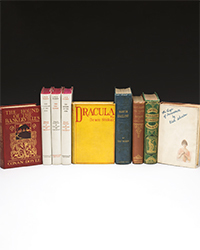
![<b>Heritage, Dec. 15:</b> John Donne. <i>Poems, By J. D. With Elegies on the Author's Death.</i> London: M[iles]. F[lesher]. for John Marriot, 1633. <b>Heritage, Dec. 15:</b> John Donne. <i>Poems, By J. D. With Elegies on the Author's Death.</i> London: M[iles]. F[lesher]. for John Marriot, 1633.](https://ae-files.s3.amazonaws.com/AdvertisementPhotos/8caddaea-4c1f-47a7-9455-62f53af36e3f.jpg)
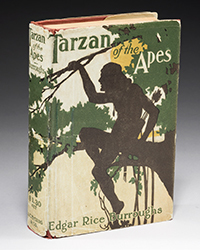
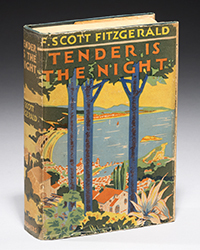
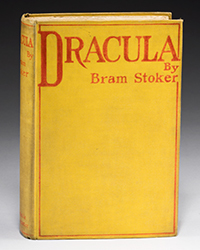
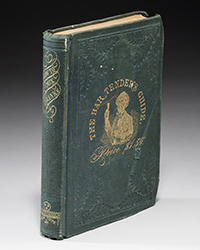

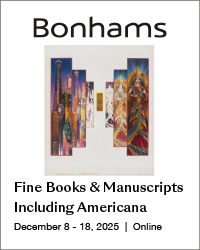

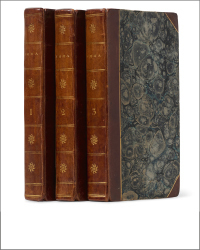
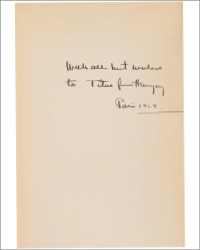
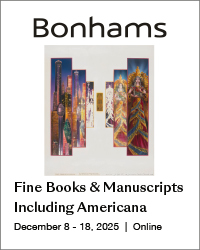
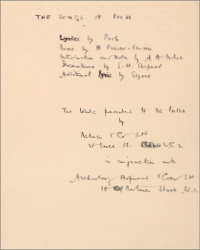

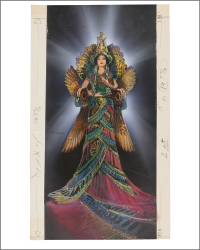
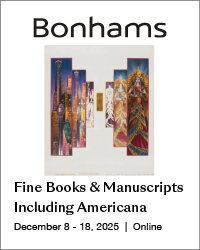
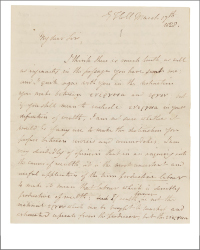
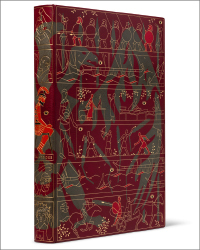
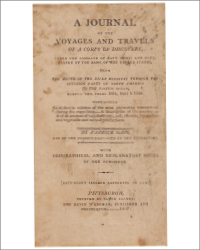
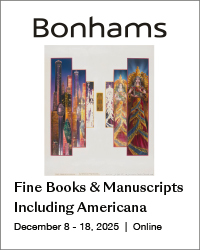
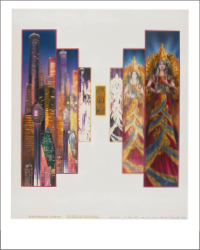
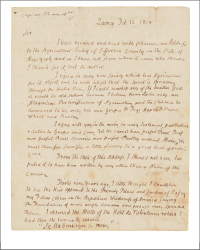

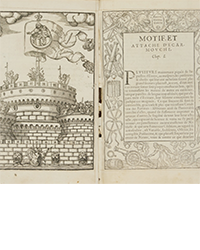
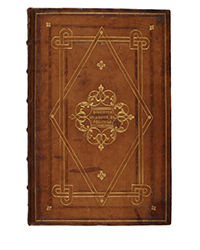
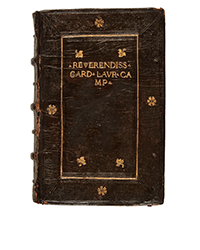
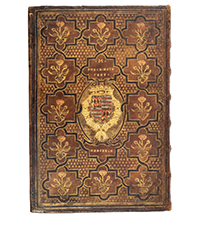
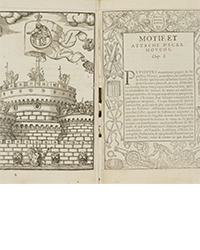
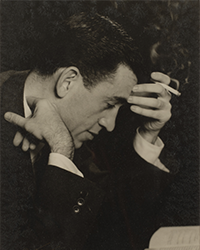
![<b>Sotheby’s, Dec. 16:</b> [Austen, Jane]. A handsome first edition of <i>Sense and Sensibility,</i> the author's first novel. $60,000 to $80,000. <b>Sotheby’s, Dec. 16:</b> [Austen, Jane]. A handsome first edition of <i>Sense and Sensibility,</i> the author's first novel. $60,000 to $80,000.](https://ae-files.s3.amazonaws.com/AdvertisementPhotos/9a74d9ff-42dd-46a1-8bb2-b636c4cec796.png)
